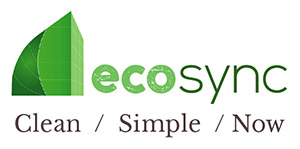
Heritage buildings, with their rich history and unique architectural features, present a unique challenge when it comes to energy efficiency and sustainability. Often built before modern heating systems were developed, these structures can be notoriously difficult to maintain a comfortable temperature without wasting significant amounts of energy. For energy and sustainability managers in the heritage building sector, finding ways to improve heating efficiency without compromising the buildings' integrity is critical. One promising solution is the implementation of retrofit heating sensors.
Understanding the Heating Challenges in Heritage Buildings
Heritage buildings often face several heating challenges:
- Poor Insulation: Many historic buildings were constructed without the insulation standards seen today, leading to significant heat loss.
- Single Glazing Windows: Traditional windows, often single-glazed, contribute to poor thermal performance.
- Irregular Heat Distribution: The layout and materials of older buildings can result in uneven heating, with some areas being overly warm while others remain cold.
- Restricted Modifications: Preservation laws often limit the extent of changes that can be made to improve energy efficiency.
Given these constraints, it's vital to find solutions that can work within the existing structure and regulatory framework.
The Role of Retrofit Heating Sensors
Retrofit heating sensors offer a compelling solution to improve heating efficiency in heritage buildings. These devices can be installed with minimal intrusion, making them ideal for use in protected structures. Here are several ways they can contribute:
- Temperature Monitoring and Control: Retrofit sensors can provide precise temperature monitoring in various parts of the building, ensuring consistent and adequate heating. By gathering data, these sensors help in understanding which areas require more attention and where heat loss is most significant.
- Energy Usage Optimisation: With detailed insights into the building's heating patterns, energy usage can be optimised. This means that heating systems can be adjusted to provide warmth only where and when it's needed, reducing overall energy consumption.
- Integration with Smart Systems: These sensors can be integrated into EcoSync's software and IOT technologies, allowing for automated adjustments based on real-time data. This integration helps in maintaining optimal temperatures efficiently and effortlessly.
- Non-Intrusive Installation: One of the biggest advantages of retrofit technology is that it does not require extensive modifications to the building. TRV's can be added discreetly, preserving the aesthetic and structural integrity of the heritage property.
- Predictive Maintenance: Advanced sensors can also predict potential issues with heating systems before they become critical. By monitoring the performance of boilers, radiators, and other components, maintenance can be scheduled proactively, reducing downtime and preserving the building’s fabric.
Practical Considerations for Implementing Retrofit Sensors
When considering the implementation of retrofit heating sensors in heritage buildings, several practical factors need to be addressed:
- Compatibility: Ensure that the chosen sensors are compatible with the existing heating system. Heritage buildings might have older systems that require specialised sensors.
- Aesthetic Impact: Select sensors that are minimally invasive and can blend seamlessly with the building’s interior.
- Regulatory Compliance: Work with heritage conservation authorities to ensure that any installations comply with local regulations and guidelines.
- Training and Maintenance: Ensure that the maintenance staff is adequately trained to operate and maintain the new systems.
The Pros of Ecosync Solution
Ecosync.energy offers a standout solution tailored for the unique needs of heritage buildings. Here are some of the key benefits:
- Proven Performance: Ecosync.energy’s technology has been tested in the heritage building portfolio of Oxford University, demonstrating its effectiveness in real-world scenarios.
- Energy Savings: By optimising energy use, these sensors can significantly reduce heating costs, leading to substantial savings.
- Preservation of Heritage Integrity: With non-intrusive installation, Ecosync.energy ensures that the historical and aesthetic value of heritage buildings is maintained.
- Enhanced Comfort: Improved temperature control leads to more consistent and comfortable indoor environments for occupants.
- Sustainability Goals: Implementing Ecosync.energy helps heritage buildings contribute to broader sustainability and carbon reduction targets.
Heating smarter, preserving history: what this means for heritage sites
Heating heritage buildings efficiently without compromising their historical value is a complex challenge. However, with the advent of retrofit heating sensors, it is possible to enhance heating efficiency significantly. These smart, non-intrusive devices provide detailed insights into energy use and enable precise control, ensuring that these treasured buildings can be enjoyed comfortably while also playing a part in our sustainable future. Ecosync.energy’s clean tech innovation, tested in the heritage building portfolio of Oxford University, is designed to seamlessly integrate into heritage buildings, offering advanced monitoring and optimisation capabilities. As we strive towards greater carbon efficiency, embracing innovative solutions like Ecosync.energy will be essential in preserving the past while securing a greener future.
